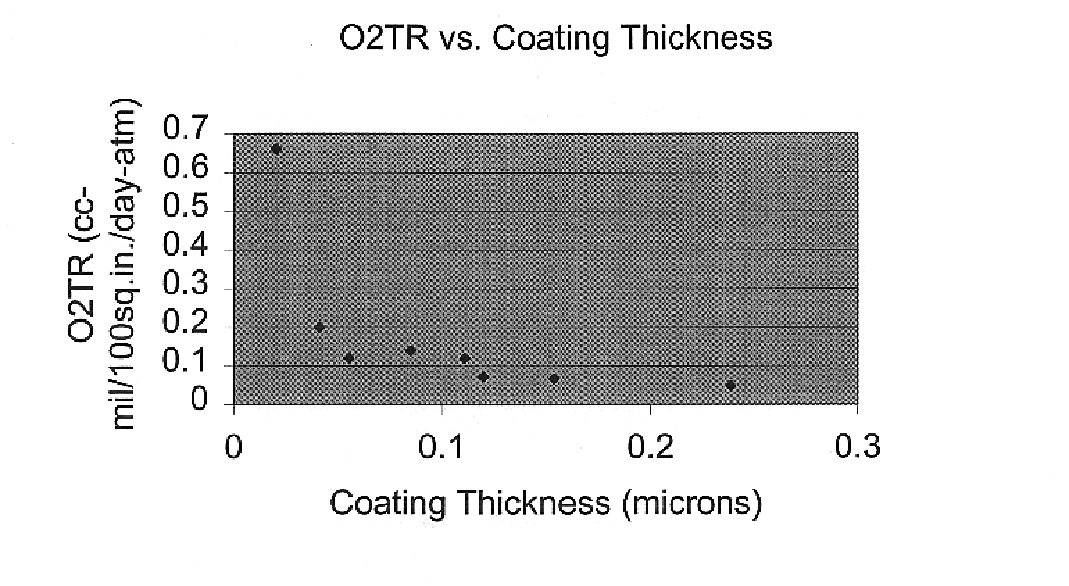Oxygen barrier coating and coated film
a technology of oxygen barrier coating and coating film, which is applied in the direction of layered product treatment, synthetized resin layered products, record information storage, etc., can solve the problems of insufficient transparency, high cost, and numerous limitations of known barrier coatings
- Summary
- Abstract
- Description
- Claims
- Application Information
AI Technical Summary
Benefits of technology
Problems solved by technology
Method used
Image
Examples
examples 7 through 9
show that they possess viable oxygen barrier properties similar to those of known coatings shown in comparative examples 1 through 6. Even at lower PVOH levels, which are preferred for their lower viscosity, viable oxygen transmission properties are indicated.
example series b
48 gauge polyester film, both uncoated and coated with a preferred coating according to the present invention (7% PAA / MA, 3% PVOH), was metallized by vacuum deposition of aluminum to an optical density of 2.5, a conventional practice for packaging films. Oxygen transmission rates were measured.
Thus, in comparison with uncoated metallized film and typical metallized film having conventional metal-adhesion coatings (which have oxygen barrier properties equivalent to those of uncoated metallized film), metallized films having the coatings of the present invention show dramatically reduced oxygen transmission rates.
example series c
12 micron thick polyester film, both uncoated and coated at various extremely low thicknesses with a preferred coating according to the present invention (7% PAA / MA, 3% PVOH), was metallized by vacuum deposition of aluminum to an optical density of 2.5, a conventional practice for packaging films. Oxygen transmission rates were measured.
Reference Data:
Plain 12 micron PET (no coating, no metal): O2TR=9.60 cc / 100 sq.in. / day
Coated (7% PAA / MA, 3% PVOH, 4% Glyoxal) (@ 0.099 microns) (no metal): O2TR=0.48 cc / 100 sq.in. / day (O2TR=0.18 without Glyoxal crosslinker at comparable thickness)
Metallized 12 micron PET (no coating): O2TR=0.23 cc / 100 sq.in. / day
Thus, even at dramatically lower coating weights, which alone would provide little improvement over uncoated film, synergy is seen with the metal layer. Excellent barrier properties result. Synergy is also seen at higher coating weights. For metallization end uses, preferred coating thicknesses are about 0.001 to about 0.07 microns, alternatel...
PUM
| Property | Measurement | Unit |
|---|---|---|
| thickness | aaaaa | aaaaa |
| weight percent | aaaaa | aaaaa |
| weight percent | aaaaa | aaaaa |
Abstract
Description
Claims
Application Information
 Login to View More
Login to View More - R&D
- Intellectual Property
- Life Sciences
- Materials
- Tech Scout
- Unparalleled Data Quality
- Higher Quality Content
- 60% Fewer Hallucinations
Browse by: Latest US Patents, China's latest patents, Technical Efficacy Thesaurus, Application Domain, Technology Topic, Popular Technical Reports.
© 2025 PatSnap. All rights reserved.Legal|Privacy policy|Modern Slavery Act Transparency Statement|Sitemap|About US| Contact US: help@patsnap.com


